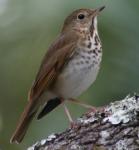Nishida Kitaro (1870-1945) was not only Japan’s foremost philosopher but remains a significant world philosopher of the 20th century. Though little known in Western circles, Nishida mastered the varieties of Western philosophical expression and promoted its encounter with Eastern thought, specifically Buddhism, in a manner beyond any Western thinker.
Nishida’s studies are wide-ranging, from Greek philosophers to Christian mystics, from rationalists and empiricists to Enlightenment thinkers, from Kierkegaard, Nietzsche, and Husserl to contemporary Christian thinkers — all are brought forth to an encounter with Eastern thought.
Nishida’s early venture begins with Aristotle and the entirely dominant role of logic and reason in the Western world. His analyses culminate in Kant and Husserl in attempting to explore the cognitive patterns in which logic discloses noetic and subjective needs. The range of human intent is necessarily self-expressive and therefore existential and concretely individual. Personal awareness and consciousness of internal contradiction reveals the ethical self — unresolvable, and paradoxical (in the world). The individual identifies the intuition of a historical existence. Yet it is a plunge into a bottomless contradiction, between existence and nothingness, with the concomitant awakening of what Nishida calls a religious awareness.
This religious awareness is not a conventional belief system but a realization of the nothingness behind the awareness of the world and its absolute presence in the historical — like a crossroad (if the individual is properly self-conscious) of the intersection of Absolute and Nothing.
It is to find this place, this space, this ground of consciousness, that embarked Nishida on an exploration of the semantic features of the religious and tapped the philosophy of Buddhism. Indeed, his final essay, in the year of his death, was titled “The Logic of the Place of Nothingness and the Religious Worldview.” It may be said that Nishida’s entire career, working doggedly on this central issue of ontology, culminated in this essay.
In this work, Nishida begins his journey with Kant. In his Critiques, Kant saw the existence of God and the immortality of the soul as logical postulates of the will. Kant capitulates (if not exhausts) Western philosophy’s dependence on reason, and logic’s defense of the preeminence of scientific logic. Kant updated Aristotle, grounding self-reflection and the a priori into human faculties of reason and the inevitability of logic. Elements outside of reason or deduced ethics are not legitimate in this tradition — namely moral will or religious consciousness, however these may be defined.
While appreciating the structure of Kant’s philosophical architecture, Nishida also notes its absence of consciousness individually, the absence of existential identity, of the ground of consciousness which is eschatological and therefore “religious” in Nishida’s more rarefied definition of the latter. It is this being-ness, this space, this matrix of the self-forming historical world that is immediately expressed in the self that Nishida wants to account for. To this process he brings an encounter between that absolute present and the nothingness of Buddhist tradition.
As Nishida translator and commentator David Dilworth notes:
Nishida argues that neither paradigm, Aristotelian or Kantian, can account for the historical self as an individual self-conscious being that knows of its own mortality. It is only when the self becomes aware of its own existential contradiction — of the fact that it is a unique living being that must die — that the religious problem arises.
By any definition, then, Nishida seems to be an existentialist, taking off directly from Kierkegaard in considering the final existential insight to be a religious one, or at least religious in the eschatological sense, the crisis sense, that Walter Kaufmann uses as a criterion for defining existentialism. But Nishida differs in the evolution of his thought. He stands out from phenomenology as the ground of existential thinking, and the stands clear from both the angst-ridden or the action-oriented philosophies that existentialism became in the mid-20th century West. Nor is Nishida speaking of practices or even dogmas of world religions, all of which are symbolic, he tells us.
Rather, our actions in the Kantian plane or realm of logic and intelligibility is unaware of historical existence. Morality itself is unaware, and death has no effect on this plane. Like Kierkegaard, Nishida states that only with self-consciousness does the self become aware of its own death. Death is not an event but a condition residing in the being, here and now, an absolute now, the “eternal now” of Dogen.
Nishida calls this point of consciousness the essential religious question because it generates a logic of contradictory identity, a logic of nothingness. The existential is the absolute, one dying in the other in absolute simultaneity and identity.
Nishida speaks further of a non-dualistic place of nothingness and a formless form. This vocabulary hearkens of Taoist, Buddhist, and Neo-Shinto thought. Mind arises, having no place to abide — a familiar Buddhist sentiment. Samsara and Nirvana are non-dual, co-originating, constituting an existential realization in enlightenment, or in transcendence in the terminology of Aristotle and Kant.
Nishida alludes to Nicolas of Cusa’s phrase: “The Absolute cannot be a One.” The Absolute is simultaneously absolute nothingness, absolute negation, maintains Nishida, further utilizing Plotinus, Eckhart, Boehme, and Cusa, but applying to this body of insight what Nishida calls “Asian nothingness” and a “logic of nothingness” to contrast both religious logic and Western “concrete” logic with the historically unencountered East. This encounter is the strength of Nishida, what makes him indispensable to philosophy, and what happily spills over into the culture of eremitism that already explores the commonalities of Eastern and Western expression.



